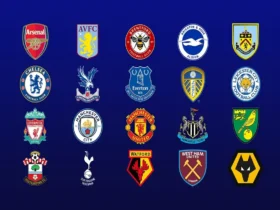Step 1: Sign Up for Google AdSense
The first step in monetizing your website with Google AdSense is to sign up for an account. Visit the Google AdSense website and click on the “Sign Up Now” button. You’ll need to provide information about your website, including its URL, content language, and the country you’re located in. Google will review your application and notify you once it’s approved.
Step 2: Understand AdSense Policies
Before integrating AdSense ads into your website, it’s crucial to familiarize yourself with Google’s policies. AdSense has strict guidelines regarding the types of content it allows, ad placement, and user experience. Violating these policies can result in penalties or account suspension. Make sure your website complies with AdSense policies to ensure a smooth monetization experience.
Step 3: Generate Ad Units
Once your AdSense account is approved, you can start creating ad units for your website. Ad units are the individual ads that will be displayed on your site. Log in to your AdSense account, navigate to the “Ads” tab, and click on “Create Ad.” You can choose from various ad formats, including display ads, text ads, and native ads. Customize the ad size, style, and colors to match your website’s design.
Step 4: Place Ad Code on Your Website
After creating ad units, AdSense will generate ad code for each unit. Copy the ad code and paste it into the HTML source code of your website’s pages. Place the ad code strategically within your content to maximize visibility and engagement. Consider factors such as user experience, page layout, and ad relevance when determining placement.
Step 5: Optimize Ad Placement
Optimizing ad placement is essential for maximizing your AdSense revenue. Experiment with different ad placements, sizes, and formats to find the combination that generates the highest earnings without compromising user experience. Consider placing ads above the fold, within content, and near navigation elements to increase visibility and click-through rates.
Step 6: Monitor Performance
Once ads are live on your website, monitor their performance regularly using the AdSense dashboard. Track metrics such as impressions, clicks, click-through rate (CTR), and earnings. Analyze performance data to identify trends, optimize ad placements, and make informed decisions about your monetization strategy. Experiment with ad settings and placement to continuously improve performance.
Step 7: Ensure Compliance
AdSense policies and guidelines are subject to change, so it’s essential to stay informed and ensure ongoing compliance. Regularly review AdSense policies and updates to ensure your website remains compliant. Address any policy violations promptly to avoid penalties or account suspension. Stay proactive about compliance to maintain a healthy and sustainable monetization strategy.
Step 8: Consider AdSense Alternatives
While Google AdSense is a popular choice for website monetization, it’s not the only option available. Explore alternative ad networks and monetization methods to diversify your revenue streams. Consider factors such as ad quality, payout rates, and compatibility with your website’s content and audience. Experiment with different monetization strategies to find the best fit for your website.
Step 9: Optimize Website Performance
Website performance plays a crucial role in ad revenue optimization. Ensure your website loads quickly, is mobile-friendly, and provides a seamless user experience across devices. Optimize images, minimize code, and leverage caching to improve page speed. A fast and responsive website enhances ad viewability, user engagement, and overall monetization potential.
Step 10: Engage with Your Audience
Building a strong relationship with your audience is essential for maximizing ad revenue and long-term success. Create high-quality content that resonates with your target audience and encourages repeat visits. Engage with your audience through comments, social media, and email newsletters. Understanding your audience’s preferences and behavior can help you tailor your ad strategy for maximum effectiveness.

































